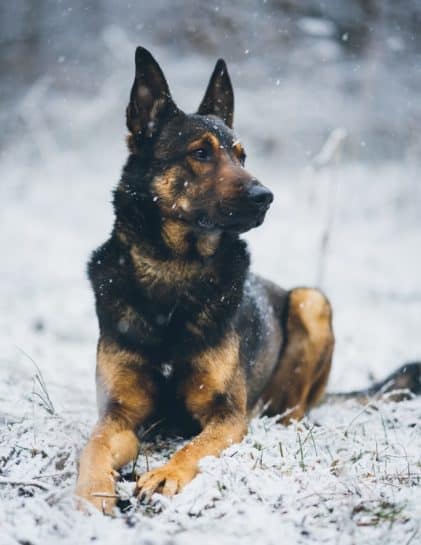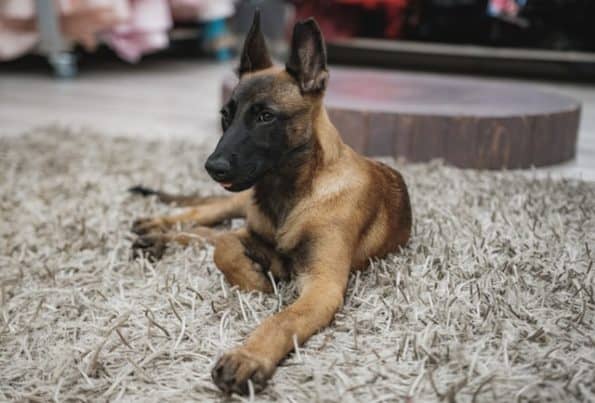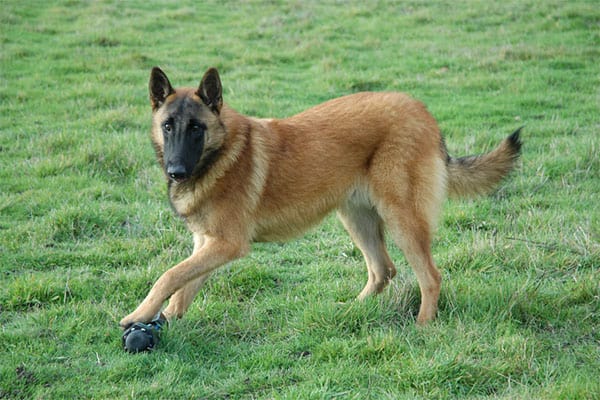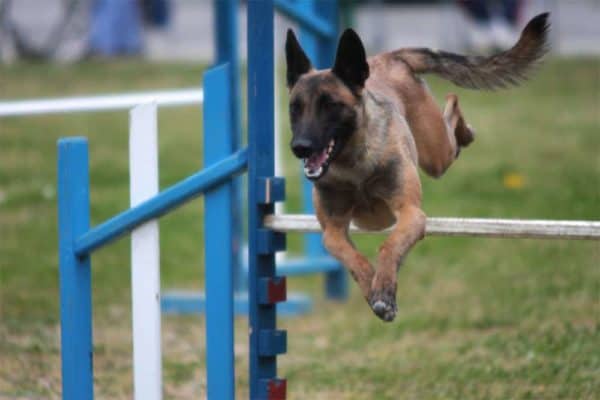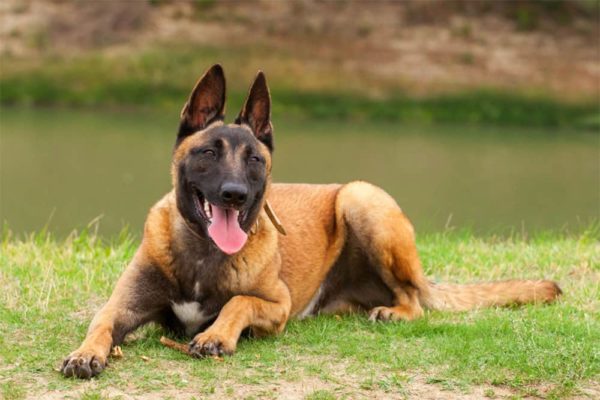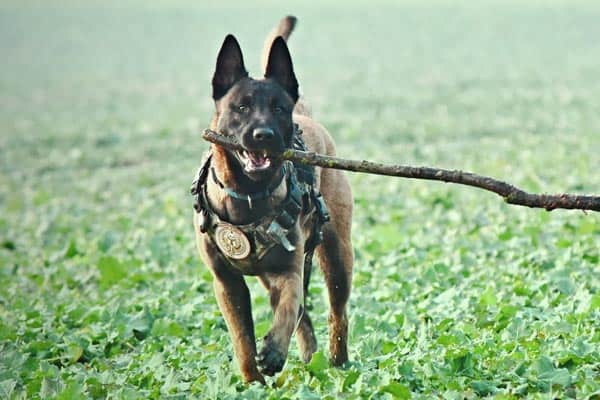Belgian Malinois Long Hair: What To Know About Your Long Haired Dog Breed
The Belgian Malinois dog is only now starting to become better known to the general community of dog lovers.
The main reason for this is a single dog named Cairo. Cairo was the K-9 who accompanied the famous Seal Team Six to raid Osama Bin Laden’s compound back in 2011. Cairo was a Belgian Malinois whose handler later wrote a book about his dog’s heroism.
Cairo’s exploits have caused the Belgian Malinois breed to become more popular and more people are becoming interested in owning these loyal, brave, and loving dogs.
But what many people don’t know is that a true Belgian Malinois has short hair. A Belgian Malinois long hair dog is likely to be one of Mal’s close canine relatives.
In this article, we introduce you to the Belgian Malinois’s closest canine relatives and tell you what you need to know about the long-haired Malinois dog.
Meet the Fabulous Four Belgian Breeds in This Short Video
This short YouTube video introduces you to the four Belgian breeds.
Four Belgian breeds of herding working dogs were being developed at the same time. The dog that is called the Belgian Malinois is one of those four.
The other three breeds were the Belgian Tervuren, the Belgian Laekenois, and the Belgian Groenendael (Shepherd).
In some countries, these four dog breeds are registered together as a single breed. In the United States, however, each breed is recognized separately.
While these dogs are genetically closely related, each dog breed has some distinguishing characteristics to those who know what to look for.
As you are about to learn, when a Belgian dog breed has long hair, it is going to be the Belgian Tervuren or the Belgian Groenendael and not the Belgian Malinois.
Belgian Malinois
The Belgian Malinois has been registered through the American Kennel Club (AKC) in the United States since 1959.
The Malinois is often confused with the similarly colored and built German Shepherd Dog. But if you look closely, you will notice their heads and faces look completely different.
Belgian Malinois dogs sport short, neat, double layer coats. The layer closest to the skin is soft and insulating and the outer layer is coarser and water-resistant.
Belgian Tervuren
The Belgian Tervuren actually looks a lot more like the German Shepherd dog if you look at the face.
These dogs have a long, lush coat, and males have a very distinctive ruff or “collarette” around the neckline area.
The coat is double layer and is nearly always multi-colored.
Belgian Laekenois
The Belgian Laekenois is quite rare and very unusual to look at. They are not likely to be mistaken for any other dog.
These dogs have a short, rough, double layer coat that is typically quite light in color – fawn is the most common coat coloration.
Belgian Groenendael (Sheepdog)
The Belgian Groenendael is also commonly called the Belgian Shepherd or the Belgian Sheepdog. These dogs have a very long, lush, double layer working-dog coat that is stunning to behold.
Their coat colors tend towards the dark browns and blacks, although fawn and silver are also seen sometimes.
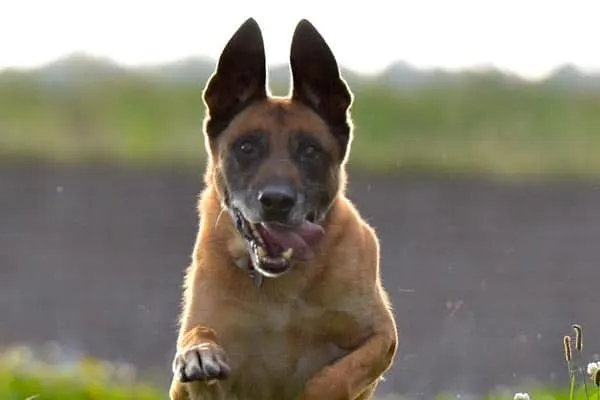
Can There Ever Be a Belgian Malinois Long Hair Dog?
There can be some cross-over among the four closely related Belgian herding and working dog breeds.
This can result in a Belgian Malinois that has long hair, although it may be a matter of debate what that dog is ultimately called breed-wise.
When there is a question of which of the four dog breeds a puppy is most closely related to, breeders tend to look at coat color more than other appearance traits such as fur length.
Here is a quick tutorial on the most common coat colors for each breed.
- Belgian Malinois: short hair coat, fawn color, black mask.
- Belgian Tervuren: long hair coat, fawn color, black mask.
- Belgian Laekenois: rough hair coat (short), fawn color, black mask.
- Belgian Groenendael: long hair coat, black color.
Here, you might be wondering how a puppy could be born to one of the four dog breeds and end up belonging to a different one of the four dog breeds. This winds up becoming a matter for the complicated science of canine genetics.
Because the four breeds – Malinois, Tervuren, Laekenois, and Groenendael – are all so closely related genetically, interbreeding is common (if not always intended).
All four of these modern recognized Belgian herding dog breeds are thought to have evolved from one shared canine ancestor.
In this way, they can almost be thought of as four subtypes of a single breed.
As such, each of the breeds still carries the genes necessary to produce a puppy that is more closely related to a relative breed.
As Dantero Malinois breeder points out, here are some possible ways that a breeding pair from one sub-type could breed and produce puppies from a different sub-type altogether.
- Two Malinois dogs could breed and produce Tervuren puppies.
- Two Tervuren dogs could breed and produce Groenendael puppies.
- Two Groenendael dogs could breed and produce Tervuren puppies.
The one exception, as you will notice, is the much rarer Laekenois sub-type.
Two Laekenois could produce puppies with some characteristics of Tervuren or Malinois dogs, but there will still be a noticeable Laekenois influence in the form of a rough coat type.
This is where things really start to get hairy.
Because some countries have decided to register the four related breeds as four distinct and separate breeds, those countries will either insist that a puppy with characteristics of more than one sub-type be dual-registered or disqualified from dog competitions.
In other countries where the four sub-types are recognized and registered as one breed with differing characteristics, purebred registration is a much simpler process.
But ultimately, if a Belgian Malinois puppy grows up to have a long hair coat, it is because of genetic influence from either the Belgian Tervuren or the Belgian Groenendael, not from the Malinois genome itself.
When In Doubt, Look at the Coat
As Modern Dog Magazine highlights, to this day breeders and judges of dog competitions still look at the coat to determine which category or categories a Belgian herding dog belongs to.
The reason for this is simple. When Belgian breeders first started to develop a dog that could be all-around excellent herding and livestock guarding dog, their focus was on temperament traits over appearance.
This is how most working dog breeding is done. Appearance can vary quite a bit so long as the personality and temperament is consistent among puppies.
The original dog breed was simply called the Belgian Sheepdog or the Belgian Shepherd.
Eventually, when some breeders living in the Belgian city of Groenendael developed a long-haired, black-coated Belgian Malinois, this dog was renamed as the Belgian Groenendael.
In the meantime, as the breeding continued, some of the Belgian dogs had shorter coats. These dogs tended to be bred near Malines, Belgium, which is how these dogs got the nickname of the Belgian Malinois.
The breeders living and working near the Belgian city of Laeken ended up breeding dogs with a more wiry and rough coat that was still short. These dogs became known as the Belgian Laekenois.
And the breeders living and working near the Belgian city of Tervuren where breeding dogs with lighter, long-haired coats. These dogs became known as the Belgian Tervuren dogs.
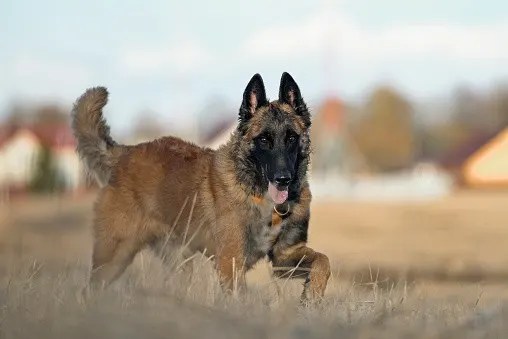
The Belgian Malinois Is Also Related to the German Shepherd Dog
Interestingly, the reason the Belgian Malinois is often confused with the famous German Shepherd dog may be more than just a simple visual mixup.
It doesn’t seem like a total coincidence that these are the two dog breeds that are the most popular for K-9, military, and police work all around the world.
The German Shepherd dog, of course, has a medium-length coat of very similar coloration to the Belgian Malinois. And some German Shepherds have long hair coats like the Belgian Tervuren or Groenendael.
The genetic relationship was uncovered in a rather unusual way when canine biologists began to investigate why Belgian Sheepdogs seem naturally resistant to canine diabetes.
The results of this study were published by Phys.org. As it turned out, both the Belgian Malinois and the German Shepherd share this natural resistance to developing canine diabetes.
The two breeds also share some genes that can lead to a puppy growing up to inherit a long hair coat!
How to Take Care of a Belgian Malinois Long Hair Dog
The Belgian Malinois is a true working dog breed. As such, these dogs have the true working dog coat – a double layer coat that sheds seasonally and year-round.
The inner layer (closest to the skin) consists of a thick, soft, insulating layer that keeps the skin warm and dry.
The outer layer is more coarse and water-resistant to help rain, ice, and snow sheet off the dog’s body.
Never ever shave a working dog’s coat
The Belgian Malinois can do the difficult, intense work out in the elements in part because of the special properties of their coat.
For this reason, the one thing that is critical to know when caring for a Mal is that you never ever want to shave a working dog’s coat. This holds true even if you think it will help your dog stay cooler in summer or help keep shedding at bay.
Actually, having a long coat is more helpful in temperature regulation than having a shaved coat. The coat acts as a moisture-wicking cooling tool to keep moisture away from the dog’s skin. It also helps prevent your dog from getting sunburned.
But once you shave the coat, it will never grow back in the same way again. As the coat grows back, the two different coat layers will intermingle and the dog will lose the protective properties the coat is meant to provide.
Preparing for the “coat blow” season
It is also important to know up front that your long-haired Belgian Malinois dog is going to shed regularly year-round. And once to twice per year when the seasons change, your dog will go through an event called a “coat blow.”
If you have never experienced a coat blow before, you will know it when it starts. The undercoat sheds out profusely in clumps and you will want to keep a dustpan and broom and a vacuum cleaner nearby.
The best way to control the coat blow is to take some time to rake and brush your Belgian Malinois each day. Using a de-shedding rake tool will trap some of the dead hair before it falls out all over the floor.
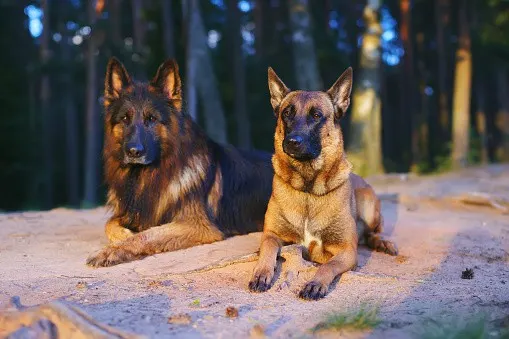
Essential Grooming and Brushing Tools for a Belgian Malinois Long Hair
Whether your Belgian Malinois has a true long hair coat, a medium-length coat, a short coat, or a rough coat, you will need the same basic set of grooming tools to help keep your dog’s coat healthy and protective.
According to Vetstreet, you will want to make time at least once per week to groom and brush your long-haired Belgian Malinois.
And you may want to do this as often as daily during the coat blows.
De-shedding rake
This tool helps you brush all the way through the thick coat to trap and remove dead hair before it sheds out.
Pin and bristle brush
A pin and bristle brush (make sure the pin side has rounded tips to protect your dog’s skin) can help stimulate your dog’s skin and add shine and gloss to the coat.
Stainless steel round-tip comb
You may find a stainless steel round-tip comb with two tine widths helpful for grooming smaller or harder-to-access areas on your dog’s body.
Detangling spray
Spritzing on detangling spray will make working out any tangles much more comfortable for your pup.
























